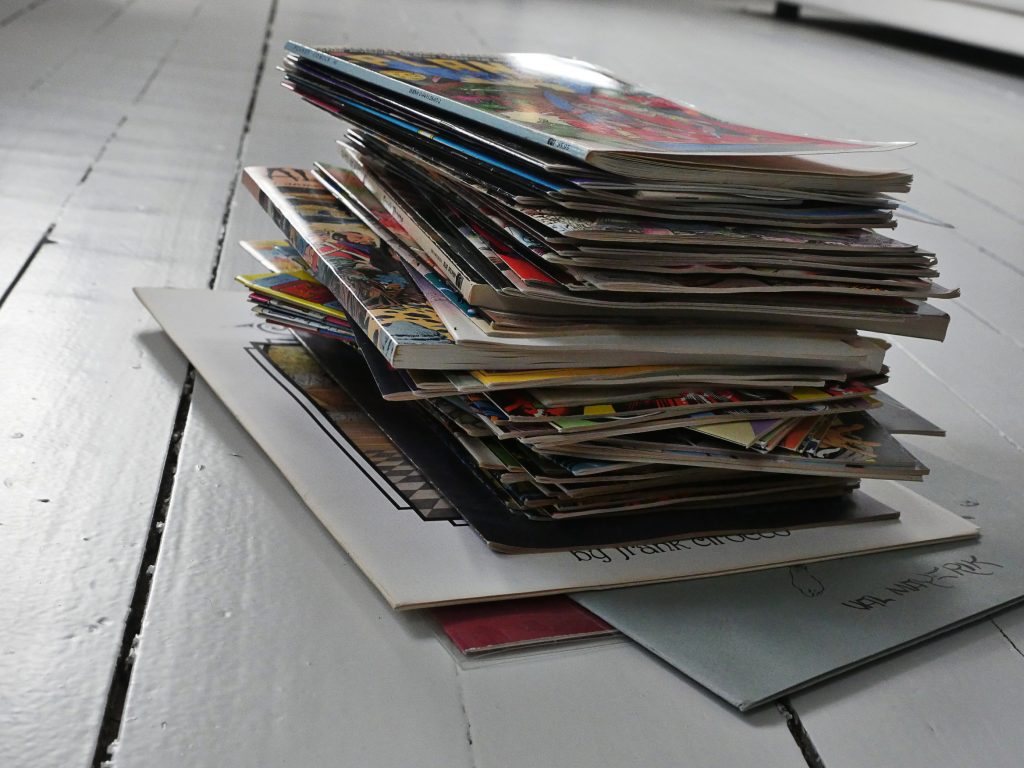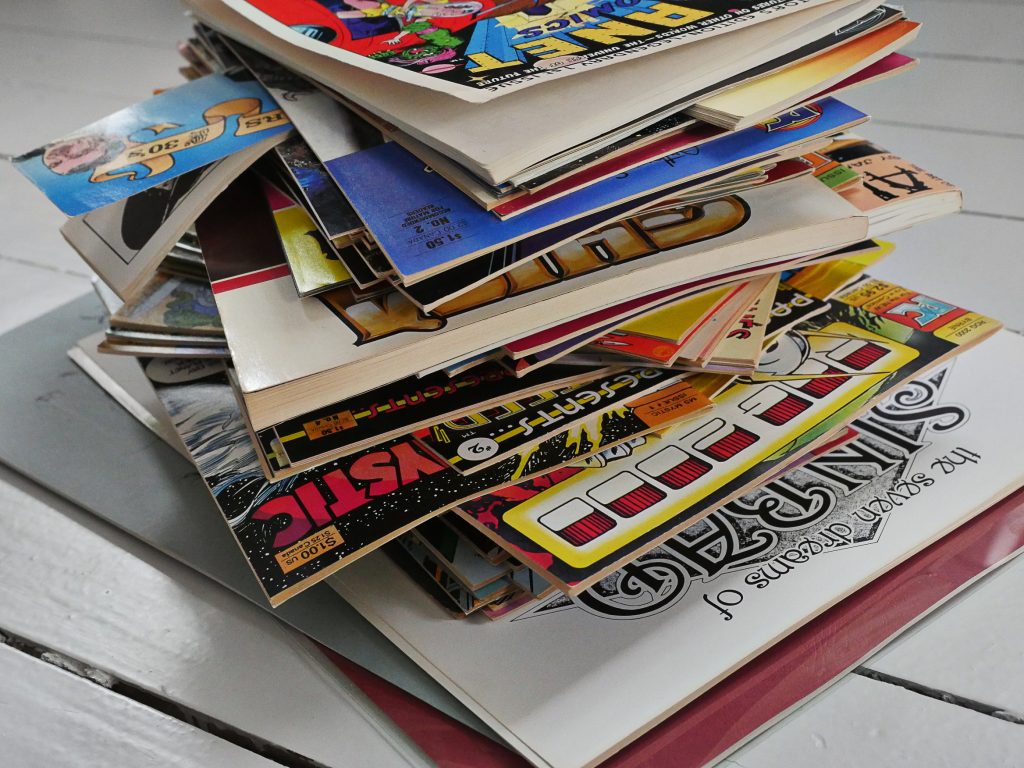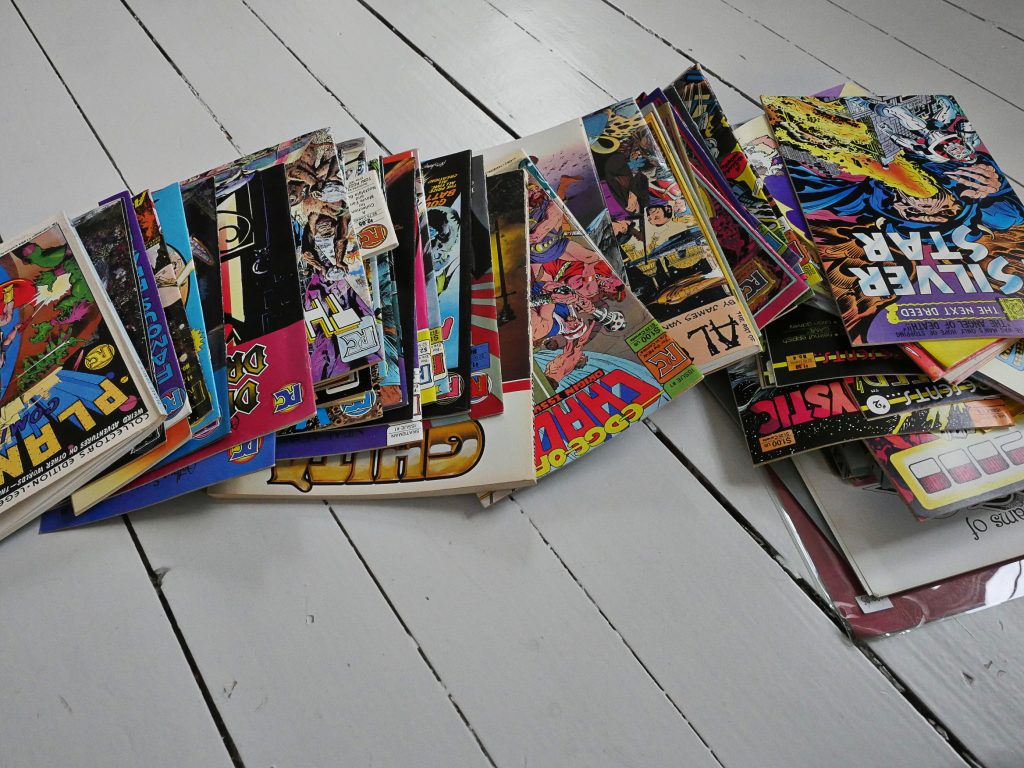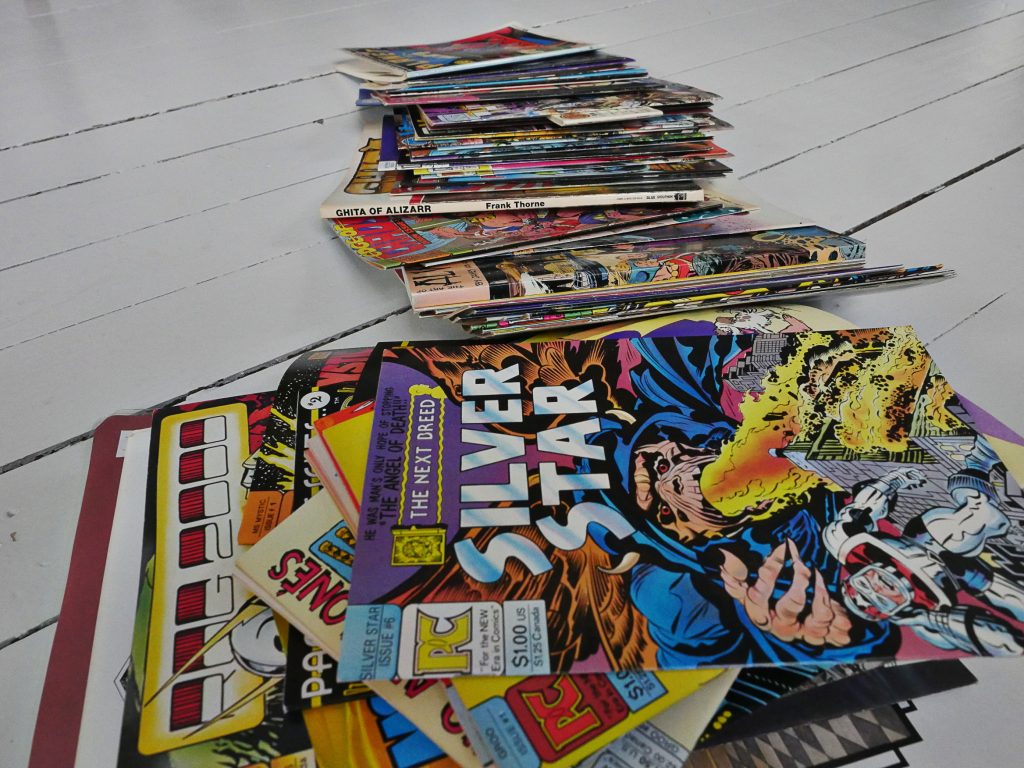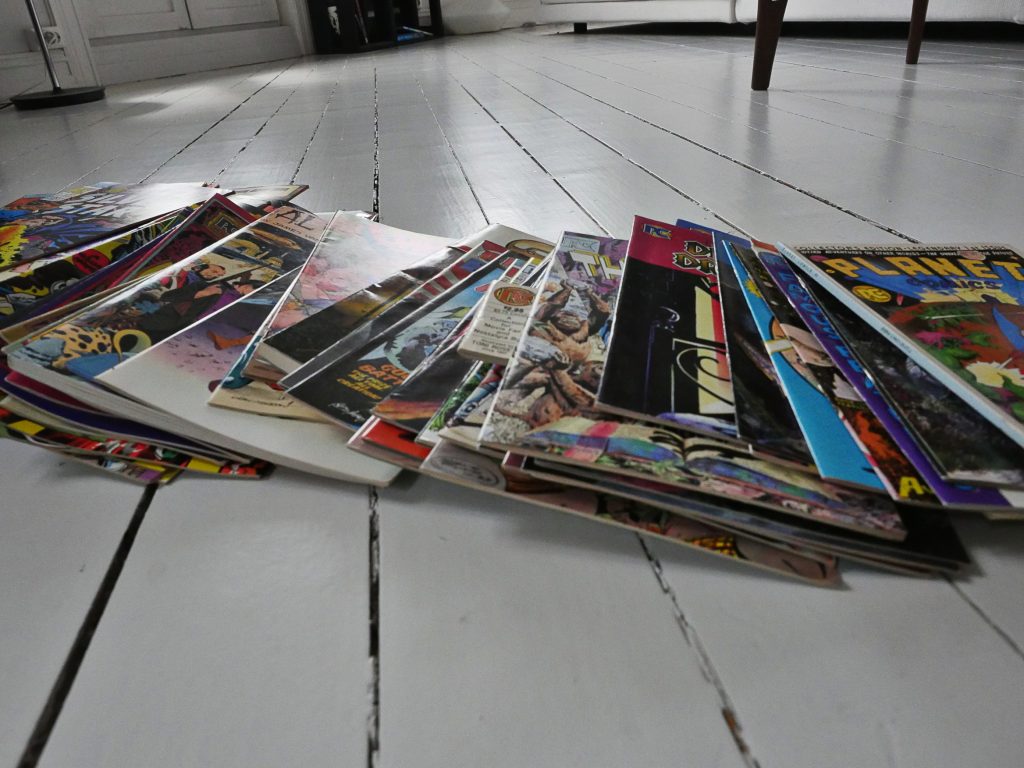So, I’ve just re-read all the comics Pacific published (except the ones I did last year for the Eclipse blog), and I have to say that I’m disappointed.
I hope that didn’t colour all the articles on this blog, because there’s nothing more boring than reading AND HERE”S ANOTHER SHITTY COMIC I HAVE TO READ, especially since nobody is making me do anything. In addition to being boring, it’s unfair to the comics and their creators, if any of them should happen to google themselves one bored night to find some twit being angry at something they did as a teenager.
But here’s my take on Pacific’s output in general: Much of it feels like it wasn’t published because Pacific thought it was excellent work, but because they thought it would sell.
No comics publisher exists in a vacuum: Unless they have a rich uncle that shovels money in their general direction, they have to publish comics that sells. But there’s a continuum between selling comics to stay in business to having a business so that you can publish comics, and Pacific feels closer to the first end of that spectrum.
Apart from the Bruce Jones/April Campbell comics, most of the comics Pacific published were from established mainstream artists, doing all the writing on the work, too, some for the first time. This, unfortunately, didn’t lead to thrilling work or a sustainable business.
As Jay Allen Sanford in his history of Pacific Comics put it:
Several palletloads of unsold Skateman comics gathered dust, and no amount of salesmanship could unload them on accounts who were by now too savvy to believe that a “marquee name” on a comic cover guaranteed sales.
That’s a line that’s disputed by the owners of the company, the Schanes brothers, who repeatedly claim that the only problem was on the distribution side, and that publishing was making a lot of money still.
“The reason Pacific Comics failed can be summed up very simply,” Steve Schanes informs me. “We had two lines of activity: publishing and distribution. Most of our comic books still made money hand over fist, but there was a big problem in distribution. We extended too much credit to retailers who didn’t pay us on a timely basis, and we were already working on a minuscule profit margin, maybe 5 percent to 8 percent. We didn’t push hard enough to get the money from receivables, who owed us hundreds of thousands of dollars. If you had to boil down the single biggest reason we blew it, that would be our poor cash management on the distribution side.”
And here’s a news item from Amazing Heroes #56, page 14
PACIFIC SUSPENSION:
Effective immediately,
Pacific Comics has suspended publication of
its color comic book line for a period of
“around two months.” according to STEVE
SCHANES, co-publisher of the company.
Schaner said that the company was
experiencing “cash-flow problems” and that he
was putting publishing on temporary hold so
that he can reorganize his unprofitable
distribution system. “It’s like a bottomless pit,”
Schanes said, commenting on the distribution
side of his business. “If you’re making money
publishing, it doesn’t matter, if you’re losing
even more on distribution.”
I’ve been referring to what Pacific went through as a bankruptcy, but apparently isn’t wasn’t that:
“TH” writes in The Comics Journal #95, page 10
Not bankrupt: On Sept. 22,
Schanes turned the corporation
over to the San Diego Wholesale
Credit Association, who will
liquidate the firm. According to
an Oct. 17 letter written by Ted
Sprink, manager of the
association’s adjustment bureau,
Schanes chose liquidation out of
several option’ because he felt
that the financial recoveries of
his creditors would be maxi-
mized through the process, as
opposed to the declaration of
bankruptcy.In the true financial sense,
Blue Dolphin is not declaring
bankruptcy. Schanes had several
options for servicing his debts.
Under the federal bankruptcy
laws, Chapter II dictates that a
company must obtain a federal
court order that allays any
possible lawsuits by creditors
until the corporation can
develop a reorganizational plan
to get back on its feet. Under
another option, Chapter 10,
management is taken from the
executives, and is turned over to
an independent trustee. In using
this particular reorganizational
plan. there is a risk that any
stockholders in the corporation
could lose their entire
investments. Additionally, there
is Chapter 7, which means
throwing in the towel
completely, with no efforts put
forth at reviving the corpo-
ration.Although Schanes said he
briefly considered both Chapters
10 and II, he eventually•decided
to go with a process called
liquidation, which means
converting stock or other assets
into cash, used to pay Off the
debts that incurred the
liquidation in the first place.
Under liquidation. any cash
that is generated first pays off
debts and any other commit-
ments to bondholders and
stockholders. If there is any
cash left over after this process,
it is doled out to stockholders
on a per-share basis.
This led to their printer going bankrupt, too:
“TH” (Tom Heintjes?) writes in The Comics Journal #98, page 12
Lawsuit: The single hardest-hit
creditor of Blue Dolphin is
Associated Litho of Tucson,
Ariz., which was forced into
bankruptcy because of Pacific’s
outstanding debt. According to
Mike Shepard, the new
president at Associated Litho,
Blue Dolphin was into the
printer for “well over”
$207,000. Associated Litho was
indeed an unsecured creditor,
which is different from a
secured creditor, such a bank.
Secured creditors are guaranteed
any investment back, even if the
company falls into bankruptcy
or liquidation, as Blue Dolphip
did. Unsecured creditors, like
stockholders, are not guaranteed
their investments back, and are
taking a gamble on the money
they put into a company, but
stand the change of makinga
large return, should their
venture prove successful. Thus’ _
Associated knew that it wag
taking a change in extending
credit to Blue Dolphin, but
Shepard said that he had written
assurance from the Schanes
brothers that the debt would be
paid off from them personally if
need be. In fact, it is this written
personal assurance that formed
the basis for Associated Litho’S
current lawsuit, filed in San •
Diego, Calif. in early January,
against the Schaneses.
In a funny twist, Pacific wasn’t the only one who owed money to the printer: Eclipse did too.
“TH: writes in The Comics Journal #98, page 13
Although Eclipse Publisher
Dean Mullaney said that the fall
of Pacific Comics benefited him
insofar as it allowed Eclipse to
grap up several of Pacific’s
lucrative books (“We made an
awful lot of money,” he said),
he declined to talk about the
alleged debt to Associated.
Jay Allen Sanford tells the story of what it was like during the liquidation:
Employees tried to scavenge as much cool stuff as we could from the trash bins, but then Steve Schanes caught some San Diego comic-shop owners loading up their cars with Dumpster treasure intended for resale. He became so upset that he grabbed a hose, climbed onto the Dumpster, and turned it on, hosing down the Pacific throwaways until the bin was a pulp-filled swimming pool. That was the only time I ever heard Steve use the F-word, and he used it a lot, standing atop the soaking refuse of his once-thriving corporation: “Fucking vultures wanna make fucking money off my fucking dead hide, well, fuck them, I’ll fucking teach ’em…”
There’s some dispute whether the Schaneses ended up paying creators what they owed them. Here’s Bruce Jones:
“Unfortunately, when PC went belly-up and stopped with the paychecks, including mine, I was left holding the bag with the other creators to the tune of several thousand dollars. I wanted everyone I’d used on my books to get paid for what they did, even if it wasn’t going to be published, so I did that by emptying my own bank account…there’s a price to pay for creative freedom, sometimes quite a high one.”
After Pacific’s shut-down, the elder Schanes brother, Steve, started a new comics publisher, Blackthorne. This was less than well received in some quarters, with people asking how he had money to do that when creators went unpaid. The younger brother, William, went to work for Diamond, a comics distributor, who (ironically enough) is owned by the same person who refused to carry comics such as Twisted Tales in his comics stores.
Here’s him talking about his last day at the warehouse:
This trip, which I had done hundreds of times before over the years would end like no other. I hadn’t realized or really given any thought to this huge change in my life, and clearly my adrenaline had completely run dry. I never made it to San Diego, and in fact, never even got out of the Los Angeles area.
[…]
The officer didn’t tell me the time again, but asked me what day was it. I said matter factly, Friday. The officer informed me that it was Sunday morning, and it was indeed 8:30 AM. I had somehow safely pulled my car over, parked in the center medium of a major highway, around 3:00 PM or so on Friday, fallen sleep, and had slept straight through until the officer awoke me on Sunday morning. I had been asleep for 42 hours (+/-).
Yowza!
Anyway, that was that for Pacific Comics.


